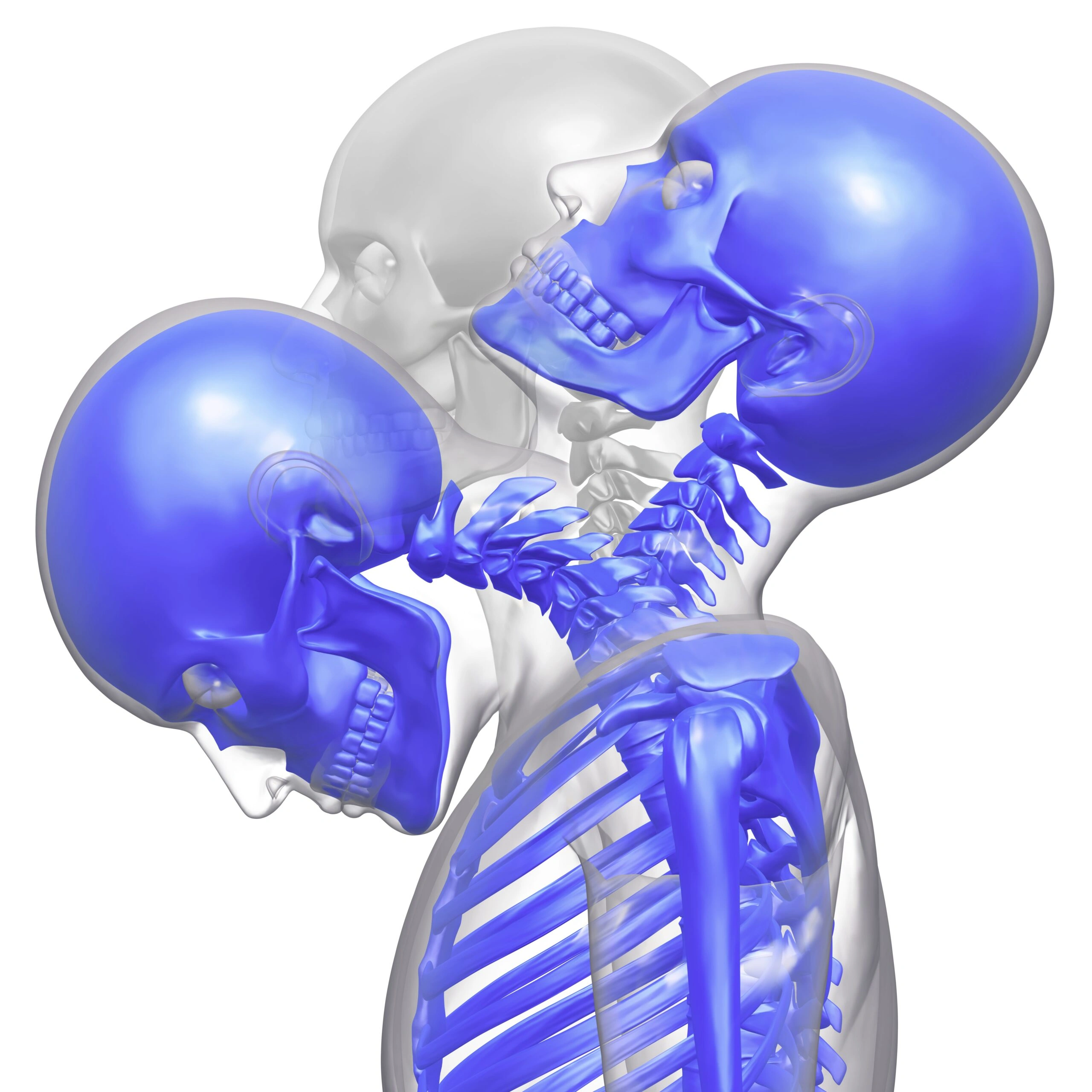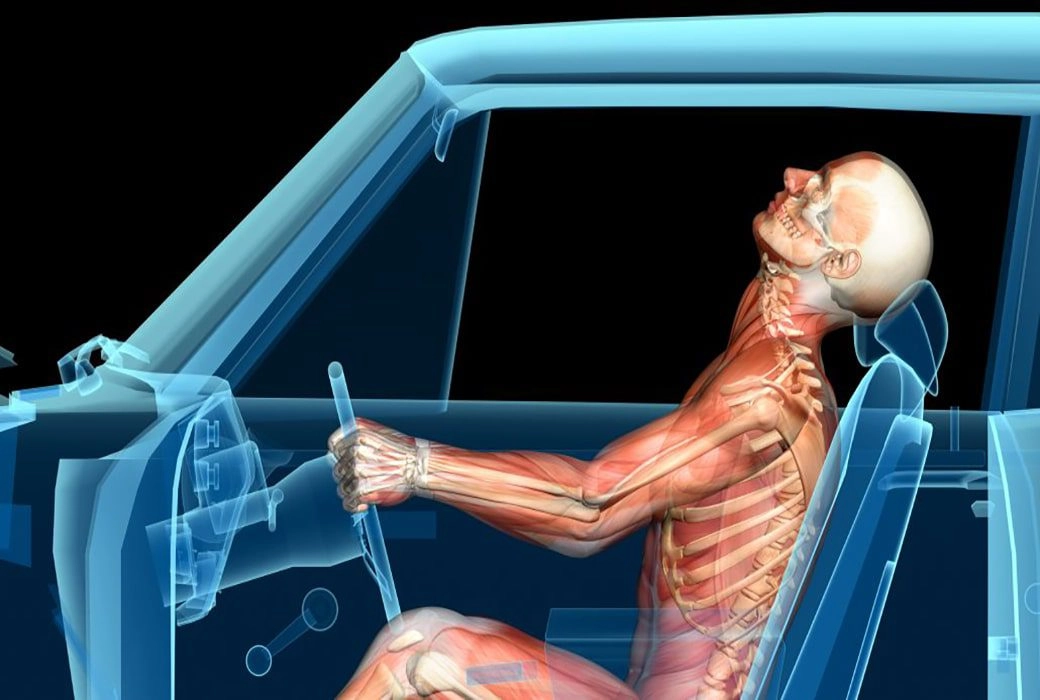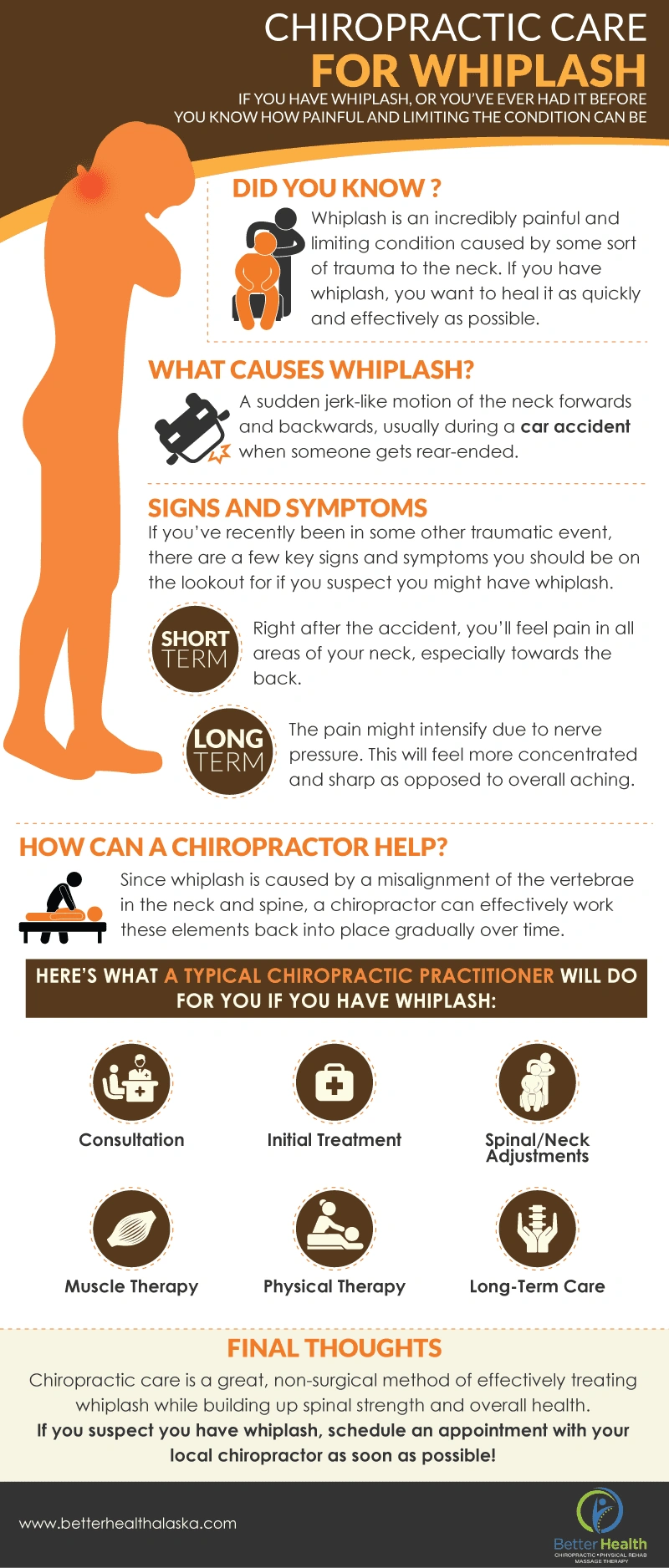If you have whiplash, or you’ve ever had it before, you know how painful and limiting the condition can be. The sharp, acute pain coupled with an extremely limited range of motion in your neck hinders your daily activities and holds you back from enjoying life. The neck is a very sensitive area, and any injury to it can really negatively impact our quality of life. Most sufferers just want it healed as quickly and painlessly as possible so that they can back to living their lives pain-free.
Luckily, chiropractic treatment is a great, effective avenue for treatment of whiplash, and regular chiropractic care over time can actually decrease your chances of getting whiplash again. Wondering how? Read on to learn everything about whiplash, from causes to symptoms, and why chiropractic care is such a perfect method of treatment for the injury.
What Causes Whiplash?
Whiplash is medically defined as any injury to the neck caused by sudden, fast movement back and forth during some sort of traumatic incident (usually a car accident). This type of forward and backward movement is very unnatural for the neck, so it can cause some intense pain and restricted mobility in the area.
The most common incident that causes whiplash is a car accident, specifically when someone gets rear-ended. When the car gets pushed forward suddenly, the inertia causes the head to jerk backward. Then, when the head hits the headrest, it gets jerked forward. This wreaks havoc on neck tissue.

Signs and Symptoms
If you’ve recently been in a car accident or some other traumatic event, there are a few key signs and symptoms you should be on the lookout for if you suspect you might have whiplash. Short-term, right after the accident, you’ll feel pain in all areas of your neck, especially towards the back. You’ll also feel limited motion due to this pain.
Long-term, the pain might intensify due to nerve pressure. This will feel more concentrated and sharp as opposed to overall aching. You’ll also still have some limited motion, and a lot of stiffness in your neck as well.
How a Chiropractor Can Help Whiplash?
Chiropractic care for whiplash is a great, non-surgical treatment option for whiplash treatment. The pain caused by whiplash comes from subluxations in the neck. Subluxations happen when vertebrae in the spine aren’t aligned properly, which causes pressure on surrounding nerves and tissue, leading to pain and stiffness. Chiropractic care is the most effective way to correct and treat subluxations, both in the neck and back. This is why a chiropractor is an effective treatment method for many whiplash sufferers. Here’s what a typical chiropractic practitioner will do for you if you have whiplash:
1) Consultation
During your first consultation with your chiropractor post-whiplash incident, the doctor will do various tests and evaluations to comprehensively assess your case and put together the best treatment plan tailored to you.
Some of these assessments will include analyzing your posture and walking patterns, as well as your overall spinal alignment and how the whiplash may be affecting other areas of your spine. Sometimes other areas of the body, especially along the spine, will attempt to compensate for any area that has been injured by taking on extra weight or falling out of alignment. This is important to correct in conjunction with the whiplash itself to make sure you’re fully healed from the injury.
The chiropractor will also check for any areas of restricted motion, nerve damage, disc injury, muscle spasms, or other tissue-related injuries that resulted from the whiplash. Often, this is done through a chiropractic technique called motion and static palpation, which involves analysis through physical touch.
In some cases, the chiropractor might also order an x-ray, MRI, or other test outside of the in-office evaluation to get a better sense of the injury and how it is affecting your body, as well as any other issues that may have previously existed. All of this is done with your absolute best interest in mind so that you can get the most comprehensive and effective treatment possible. Schedule with us for a consultation.
2) Initial Treatment
After the chiropractor has thoroughly assessed your case and figured out the best way to move forward, he or she will recommend some initial treatment options. These tend to be a bit more gentle and less involved than later-stage treatment modalities, as the pain is often still intense and the neck is too stiff to adjust properly.
Some of the most common initial chiropractic treatments for whiplash involve reducing inflammation through various methods. Gentle stretching is usually done to reduce muscle tension and relieve some pain. The chiropractor may also use ultrasound or muscle energy therapy to reduce inflammation as well.
Your chiropractor may suggest sitting with an ice pack on the neck at home to keep reducing that inflammation and acute pain in this initial stage. They may also recommend having some sort of neck support pillow or brace to encourage healthy, natural alignment and gently bring your neck back to normal over time.
As the pain and inflammation decrease, your chiropractor will still use these gentle techniques, but gradually start to couple them with some light muscle and spinal manipulation to start bringing your neck back into alignment and restore motion to the area.
3) Spinal and Neck Adjustments
As time goes on, the adjustments will get more involved and the chiropractor will focus on restoring the area back to its original health. They will likely do this through spinal manipulation treatment, which involves you sitting or laying down on their table while the chiropractor uses hands-on techniques to correct misalignments and push vertebrae back to where they belong.
This is the most common and effective chiropractic treatment for whiplash because re-aligning the spine and neck properly will relieve pain caused by nerve pressure, and inflammation as well. It will also help bring back proper blood flow to the area, allowing for greater ranges of motion.
If you’re curious about the specifics of some of the most common and effective types of spinal manipulation tactics, here are a few:
- Specific Spinal Manipulation – This kind of therapy is the most common one employed by chiropractors, whether they’re treating whiplash or not. They will identify subluxations and then restore motion and alignment to the area by applying a gentle thrusting technique that stretches soft tissue and triggers the nervous system to bring the area back into normal alignment.
- Flexion-Distraction – This modality is a non-thrusting method of manipulation to treat herniated discs, which may occur in conjunction with whiplash. It involves the chiropractor slowly “pumping” the area of the disc with his hands rather than putting direct pressure on it, thus encouraging the disc to heal and fall back into place.
- Instrument Assistance – Another non-thrusting technique many chiropractors utilize involves instrument assistance, or the use of a hand-held medical device to apply force to the area without thrusting the spine back into place, which might be too intense in some cases.
4) Muscle Therapy
To supplement these spinal adjustment techniques, your chiropractor may also employ some muscle therapy treatment methods in your care as well. This usually involves manual (touch) therapy to alleviate muscle or ligament pain and reduce inflammation in the joints caused by misalignments or injuries. Some of the most common muscle therapy treatments include:
- Joint Stretching and Resistance – This one is pretty self-explanatory, involving the chiropractor gently stretching muscles in different directions in order to increase mobility and reduce soreness. Once the muscles are back to normal, the chiropractor may also employ some muscle resistance techniques in order to build strength in the area to avoid further/future injury. This is especially effective for neck muscles, as they take on a lot of tension after being injured in a whiplash incident.
- Massage – The therapeutic massage takes the stretching above one step further, focusing on increasing blood flow to the area by massaging and encouraging healthy relationships between all tissues and muscles in the area. This greatly reduces inflammation and promotes a sense of overall relaxation – which most patients desperately need after suffering whiplash!
- Ultrasound – The chiropractor may employ an ultrasound into your treatment if you have intense stiffness or spasms in your neck from the whiplash. Ultrasound therapy involves sending sound waves through your muscle tissue, which creates heat in the area and increases blood flow. This increases blood circulation in the area, thus decreasing pain, stiffness, and spasms.
- Trigger Point Therapy – Finally, one of the most simple muscle therapies your chiropractor might use is trigger point therapy, which involves the identification of specific points of acute pain or tension and putting direct pressure on these points to alleviate the tension. This is usually done in conjunction with massage or stretching.
5) Physical Therapy
Depending on how severe your case is ,your chiropractor may also recommend a supplemental physical therapy regimen if the injury needs to be healed through modalities beyond the ones mentioned above. Physical therapy can be done in conjunction with chiropractic care for whiplash, so you’ll have the most comprehensive treatment possible and heal as quickly as you can.
6) Long-Term Chiropractic Treatment
The best way to prevent whiplash from happening again is to maintain the long-term health of your spine (and overall health). A regular chiropractic visit will be your best bet for keeping your neck healthy and aligned and preventing any sort of future injury to that area.
What You Can Do At Home
In addition to these treatments and regular, long-term chiropractic treatment under the supervision of a chiropractor, there are a few things you can do at home to treat your whiplash every day. These include icing the area with a comfortable ice pack (as mentioned above). Make sure not to put ice directly on the area, as this can really irritate the skin. Wrap it in a towel if you don’t have a compress available.
Your chiropractor may also suggest some functional, light exercises and stretching you can do at home on your own to aid in the healing process. Make sure to pay close attention to his/her directions and follow them closely though, as doing the exercise or stretch the wrong way may actually cause further injury.
Also, consider your daily habits and activities and see if any of them may exacerbate muscle stiffness or pain in your neck. Try to stay away from these activities until you are fully healed, and when you go back to them, make sure to maintain proper alignment and posture as you do them.
Final Thoughts
While whiplash can be painful and limiting, it doesn’t have to last like that for very long. Whiplash is caused by a sudden jerk-like movement of the neck back and forth, usually in the case of a car accident. If you’ve been in an accident like this where your neck was moved in a very abnormal way, you’ll want to look out for a few signs and symptoms of whiplash like nerve pain, stiffness, muscle tension, and limited range of motion.
All of these symptoms are actually signs of subluxations in the neck, or vertebrae that were thrust out of place by the accident. Chiropractic care focuses on treating subluxations in the spine and neck, so chiropractic care is a perfect, non-surgical method of treatment for whiplash. The chiropractor will go through various stages of assessment and treatment with you, and depending on the severity of your case, may also recommend outside treatment in conjunction to the chiropractic care, like physical therapy or at-home exercises.
Either way, you can be assured that your chiropractor has your best interest in mind, and their treatment plan will be one tailored to your injury, ensuring you heal as quickly and effectively as possible.
Make sure to continue treatment with your chiropractor over time to decrease your chances of experiencing whiplash again. Spine and neck health are pertinent to our overall health and well-being, so maintaining this area of the body will leave you feeling vital, healthy, and ready to tackle whatever life throws at you!










